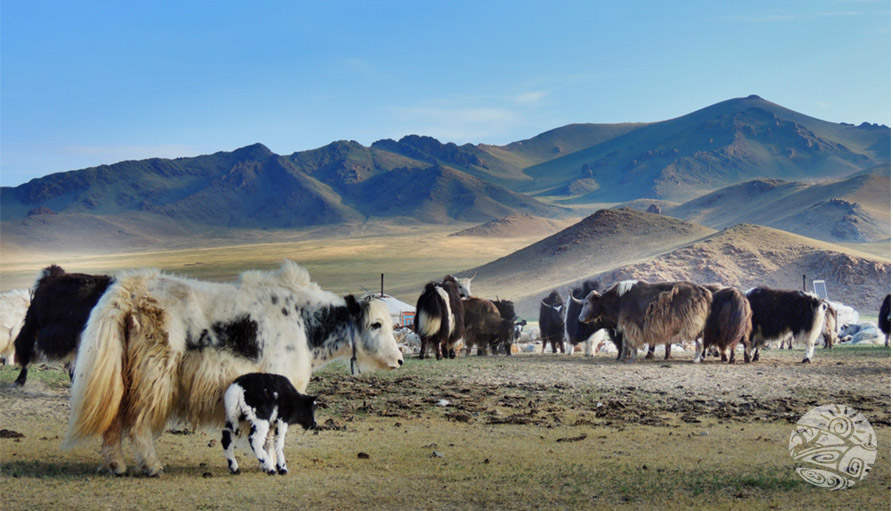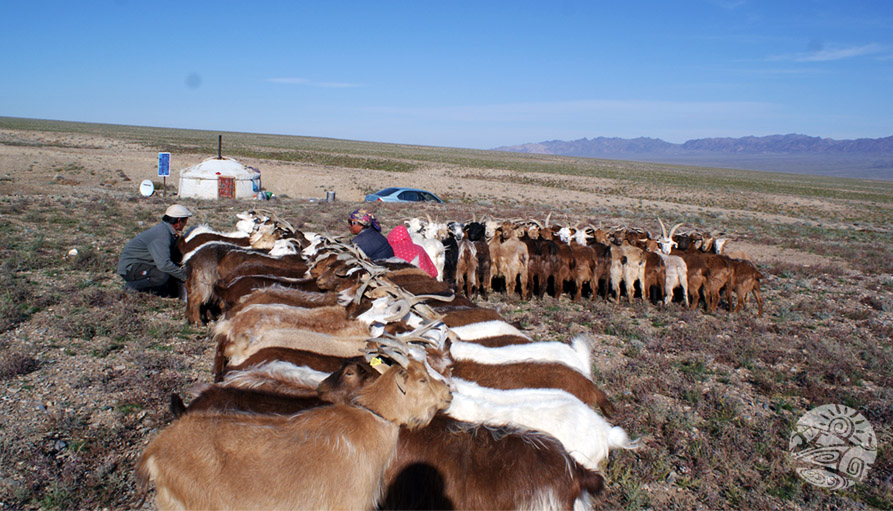
Nomad lifestyle
Mongolia is one of the nomad countries in the world. Mongolian nomadic people move into place to place 2-4 times a year.
Since the Hun Empire, Mongolians have been raising their five domestic animals. This includes sheep, horse, cow, camel, and goat in the broad region of forest, steppe and Gobi desert. Mongolia has 4 seasons and nomadic people move into place to place 2-4 times a year as well as it is depending on livestock's pasture. Mongolian nomad people always following their livestock. Because livestock knows where is the best pasture. Mongolian herders live in Mongolian traditional dwelling (covered felt) Ger.

Mongolian Yak
Mongolian livestock
Mongolian five domestic animals are sheep, horse, cow, camel, and goat. Mongolia is the land of livestock. Now in Mongolia has over 55.9 million livestock, including 24.9 million sheep, 23.6 million goats, 3.8 million cattle, 3.3 million horses and 367.9 thousand Bactrian camels.
On these five animals depends the prosperity of the country. The sheep and goat provide mostly meat, wool and leather. The cow is eaten and milked, and its hide provides leather often the yak is used instead of the cow, or else together with cattle. The she- yak's milk is fatter. The yak seems more active than the cow, and as one approaches a mixed herd, the yak's - hairy as terriers - are always the first to run off, lofting their- feathery tails like pennons. Also there is hainag, a yak cow hybrid. (The reverse hybrid, from a Mongolian bull with a female yak, is possible, but not used.)The male hainag is strong, stronger than either parent. It is burly beast with hair longer than its mother's and shorter than its father's. The female produces more milk than the female of either parental stock. But its calf, the ortom, is a weakling, and breeding is not taken other.

Milking the Goat
The horse is kept as a mount and for milk. Mares must be in foal a great part of the year. Several times in journey you will come across twenty or thirty horses crowded, noses together close to Ger. Mongols say they milk better if you let the foal start them. The means of transport is the camel. His wool warm to the rider, is taken also. But he is not eaten, nor his female milked, save perhaps on the edge of the desert where no other livestock viable. Camels are formidable. The males, when their minds are on mating, foam at the mouth and fight. Camel herds are usually smaller than those of other animals. Camels and coats are shorn but once a year. Sheep sometimes twice. A Mongolian sheep gives three or four pounds of wool a year.













